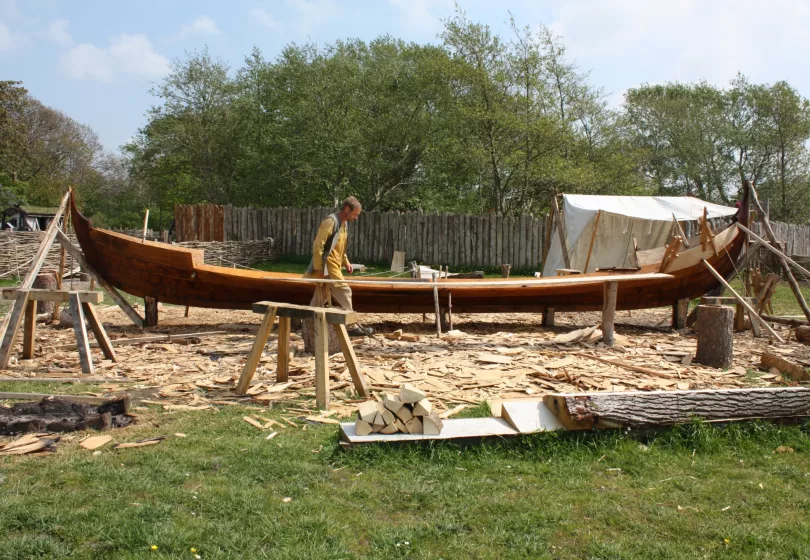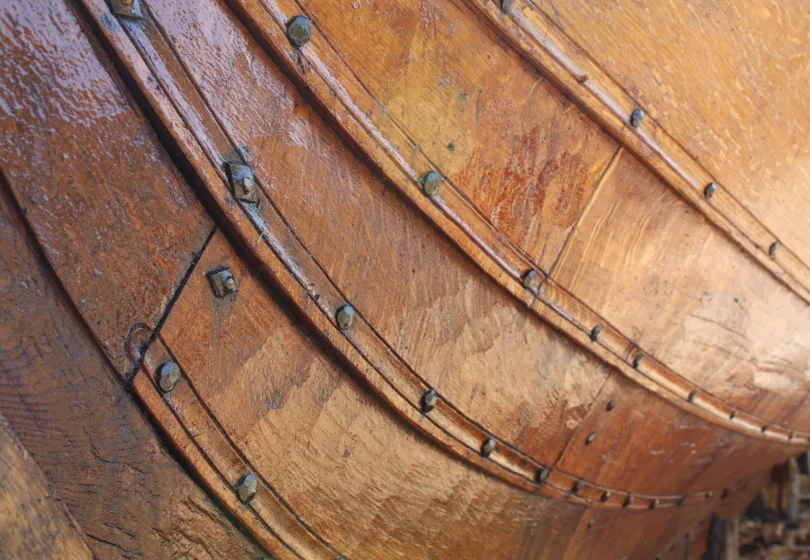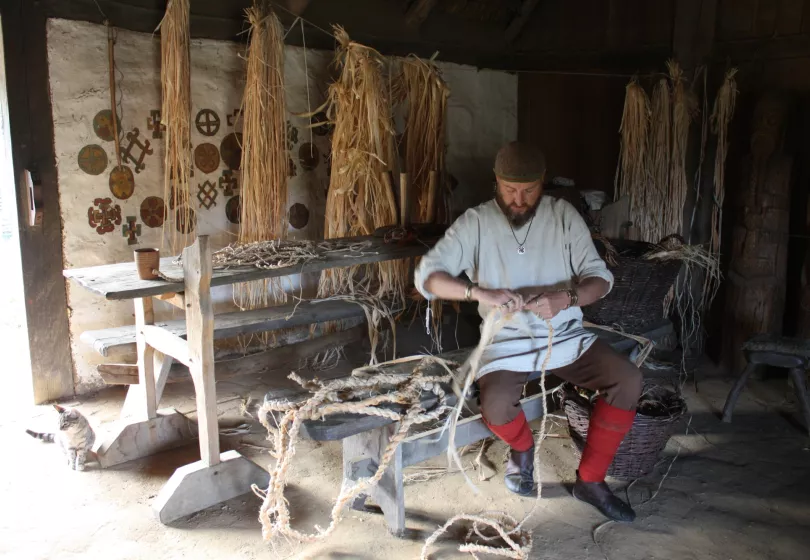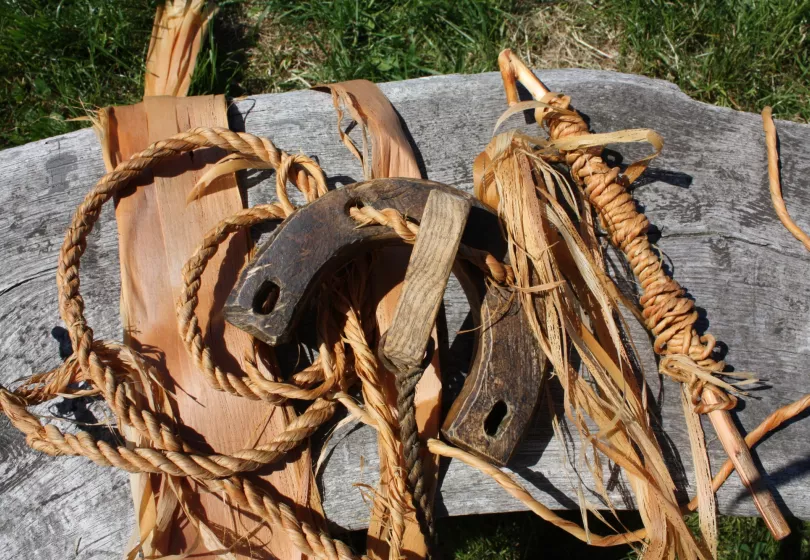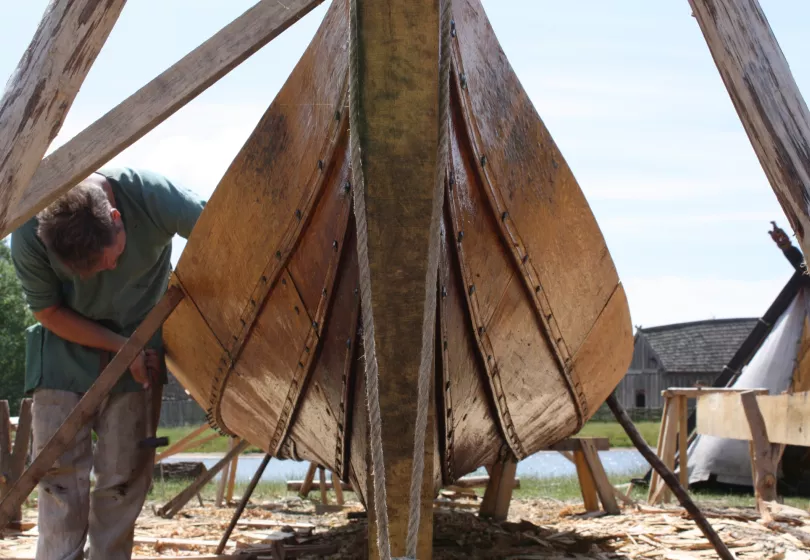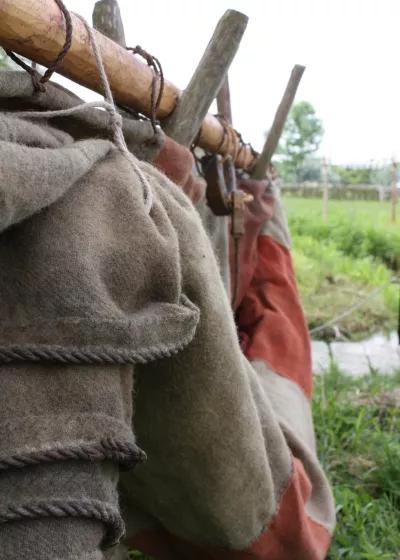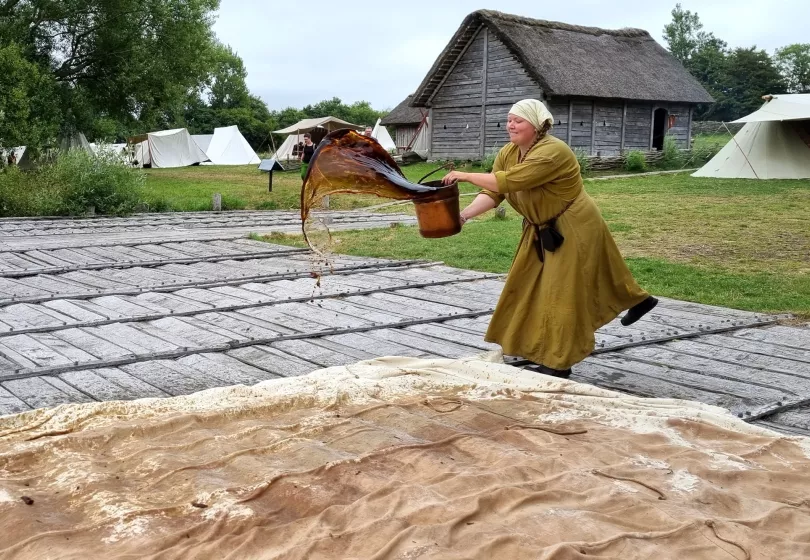Boatbuilding in Ripa
A ship's anchor weighing 27.5 kg, along with many finds of rivets in the Vikings' market place, show that boats and ships were repaired in Ripa.
The boats in Ribe VikingeCenter
The three boats at the harbour were all built in Ribe VikingeCenter. They are boat types that are suitable for sailing trips between the islands in the Wadden Sea, but also for seal hunting, fishing and transporting cargo on the river.
The largest boat is 9.25 m long and 2.02 m wide. It has five pairs of oars and must be rowed by 10 people. It is not a reconstruction of a Viking Age ship find, however, the boatbuilder and his apprentice followed the Vikings' methods to the letter in terms of tools, construction and choice of materials.
The boatbuilder had built several boats and therefore had great know-how and a fascinating understanding of the material. He himself went to the forest to select the oak trees for the boat. Two large first-class trees was felled and each one split radially into 30 pieces. These were then cut into 15-18 mm thick planks. A smaller trunk was selected for the keel, and about 30 pieces of crooked wood from the crowns of eight other oak trees were to be used for stem and ribs.
First, the keel and stem were set up and the planks were adjusted and fixed with iron nails on both sides to overlap each other. That is the essence of clinker boat building. After a number of planks, the ribs were adjusted one by one. The result is a light, flexible and strong boat. Between the planks came sheepswool and the hull was treated with pine tar several times to make the boat water tight.
The boatbuilder worked together with other craftsmen to complete the boat. The blacksmith delivered about 800 hand forged iron nails for the boat. The ropemaker produced a strong and absolutely indispensable rope. The boat also had an 18 m2 raw sail, which was as expensive as the boat itself. You see, the process from sheep to mast is long and laborious. The sheep had to be sheared and the wool sorted and spun, before the sail could be woven and sewn. The sail was then made waterproof with an extract of oak bark. The bark was boiled in water, which became completely dark brown from the tannic acid. The brown water was then distributed on the sail which then was left to dry.
Meet the weaver as he is working on the sail for the boat:
The Viking boat Gisla
Gisla, the smallest boat in Ribe VikingeCenter is a reconstruction of a find made at Gislinge by Lammefjorden. It is not a warship, but a type of boat that was well suited to many purposes closer to shore. It was built in collaboration with the Viking Ship Museum in Roskilde.
This
7 m long and 1.5 m wide boat is clinker-built with radially split oak planks built up around a T-shaped keel. It could be rowed by three men,
each with a pair of oars, and was also fitted with a mast and sail. The
same type of boat is still used today for fishing and transporting
people in western and northern Norway. Form and build have remained
pretty much unchanged since the days of the Vikings - a witness to what brilliant shipbuilders the Vikings were.
Watch the boatbuilder and his apprentice at work:

